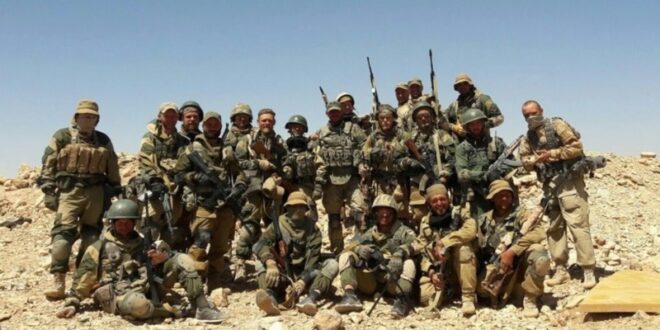As the Ukraine war nears its 500th day, the key issue on the minds of international policymakers is what impact last weekend’s extraordinary mutiny of Wagner forces will have on the conflict.
The uprising, which exposed the growing internal fissures within Russia, will do nothing to strengthen the country’s already faltering war effort. But its wider impact, including on President Vladimir Putin’s hold on power, will not be fully known for many days, if not weeks. This is despite some instant assessments — including from former Russian Prime Minister Mikhail Kasyanov — that this is the “beginning of the end” of Putin’s presidency.
A number of other commentators, including former UK MI6 intelligence chief Richard Dearlove, had previously predicted that Putin may only last in power for months, rather than years, and that Russia could be broken up into several states. However, the president’s political longevity has been remarkable over the last quarter of a century and, while he is clearly down and very badly weakened, he cannot yet be counted out.
One fact that will assist Putin is the support coming from foreign countries, including staunch allies like China and other friendly nations like Turkiye. Beijing on Sunday said it supported Russia in “protecting national stability.” The same day, Chinese Foreign Minister Qin Gang met with Russia’s Deputy Foreign Minister Andrey Rudenko.
The Wagner mutiny came at a time when the initiative in the war had already very much shifted toward Ukraine, as it moved forward with its much-anticipated counteroffensive. Kyiv will be hoping it will be able to make even bigger gains than it had previously hoped for if disarray sets in among the wider pro-Moscow forces.
If Putin remains in power, which seems most likely for the foreseeable future, and the Russian war effort continues apace, the conflict will probably follow a war of attrition trajectory, albeit with significant twists and turns. This seems especially likely as long as both sides remain prepared to expend massive resources.
Some Western intelligence sources estimate that more than 200,000 Russian soldiers have already died on the battlefield, which was one of the chief gripes of Wagner leader Yevgeny Prigozhin. Meanwhile, the West has committed vast sums to Ukraine in aid and military support.
Historically, wars tend to end when one side imposes its will on the other on the battlefield, then at the negotiating table; or when both sides embrace a compromise they deem preferable to fighting. While one of these outcomes could emerge — for instance, if the Ukrainian counteroffensive makes massive, spectacular gains and/or the Putin government implodes — they remain highly unlikely at the time of writing, despite the recent fast-moving events.
Although a continued war of attrition may imply a degree of stability in the conflict, the events of recent days show why this is not the case and the level and range of risks actually remain exceptionally high. This is why the outcome remains so unpredictable — a factor not helped by Russia’s saber-rattling around its potential use of nuclear weapons and its disregard for nuclear power sites.
Pessimistic as this central scenario of a continued war of attrition may seem, with the human cost — including for millions of refugees — largest of all, there are at least two other plausible outcomes. Firstly, there is a slim but significant window of opportunity for peace talks to open up, especially if a war of attrition continues for many months, with heavy casualties suffered by both sides.
Although neither Moscow nor Kyiv are currently showing strong signs of wanting to negotiate, this could change. On Ukraine’s side, for instance, if its counteroffensive yields little fruit, pressure may grow significantly in the West to explore a peace deal. There would be a lot of opposition to this, of course, but a pathway may be found.
For instance, key Western leaders could highlight to Ukraine that, during the Cold War, the US-led alliance did not recognize Soviet control of the three Baltic states. Ultimately, these countries emerged free and democratic after the end of the Cold War. The parallel with those parts of Ukraine now occupied by pro-Moscow forces could be strengthened with generous Western construction assistance, as well as security guarantees, for Kyiv.
For Putin, a peace deal might have growing utility as he fashions his political strategy ahead of next spring’s presidential ballot. The Russian leader could seek to argue that, despite the manifest failures of Moscow’s military campaign, it is a case of mission accomplished thanks to the seizure of significant slices of Ukrainian territory, if these can be held in the meantime.
Another factor that may also increase the prospects for peace is the growing interest of China in the conflict. President Xi Jinping, who has already tabled a vague peace plan, has the most influence within Russia of any world leader.
However, the worst-case scenario — escalation — is also a possibility because of Russia’s growing weakness. If Moscow raises the odds, the conflict could even escalate beyond Ukraine to involve NATO countries.
While this still seems highly unlikely to many, it cannot be dismissed, such is the volatility of the situation. Although NATO is doing what it can to support Ukraine without getting itself entangled in a direct military confrontation, miscalculation is a real concern.
However, such an outcome is still not the central scenario. Rather, that is instead that a war of attrition grinds away.
 Eurasia Press & News
Eurasia Press & News



